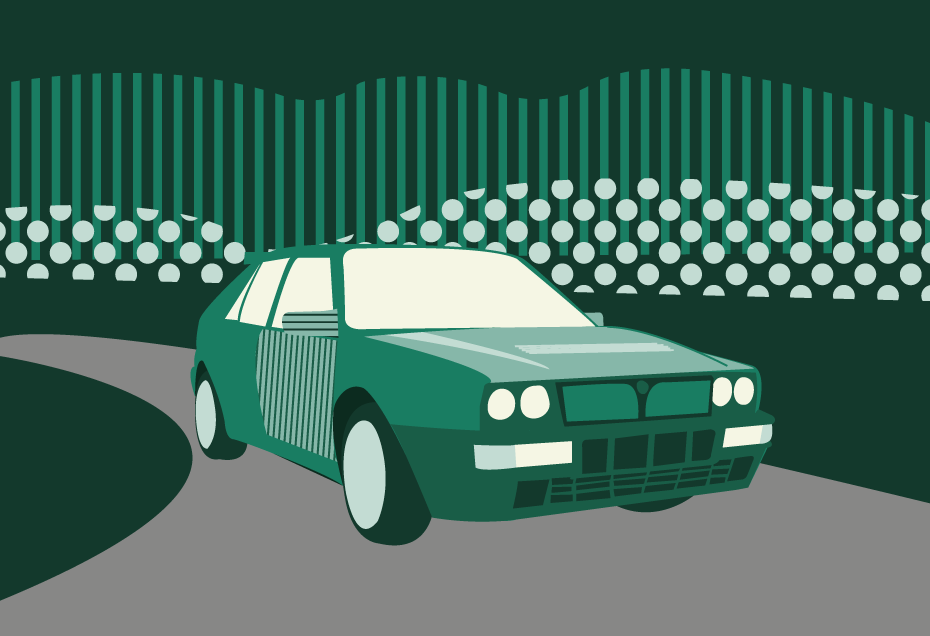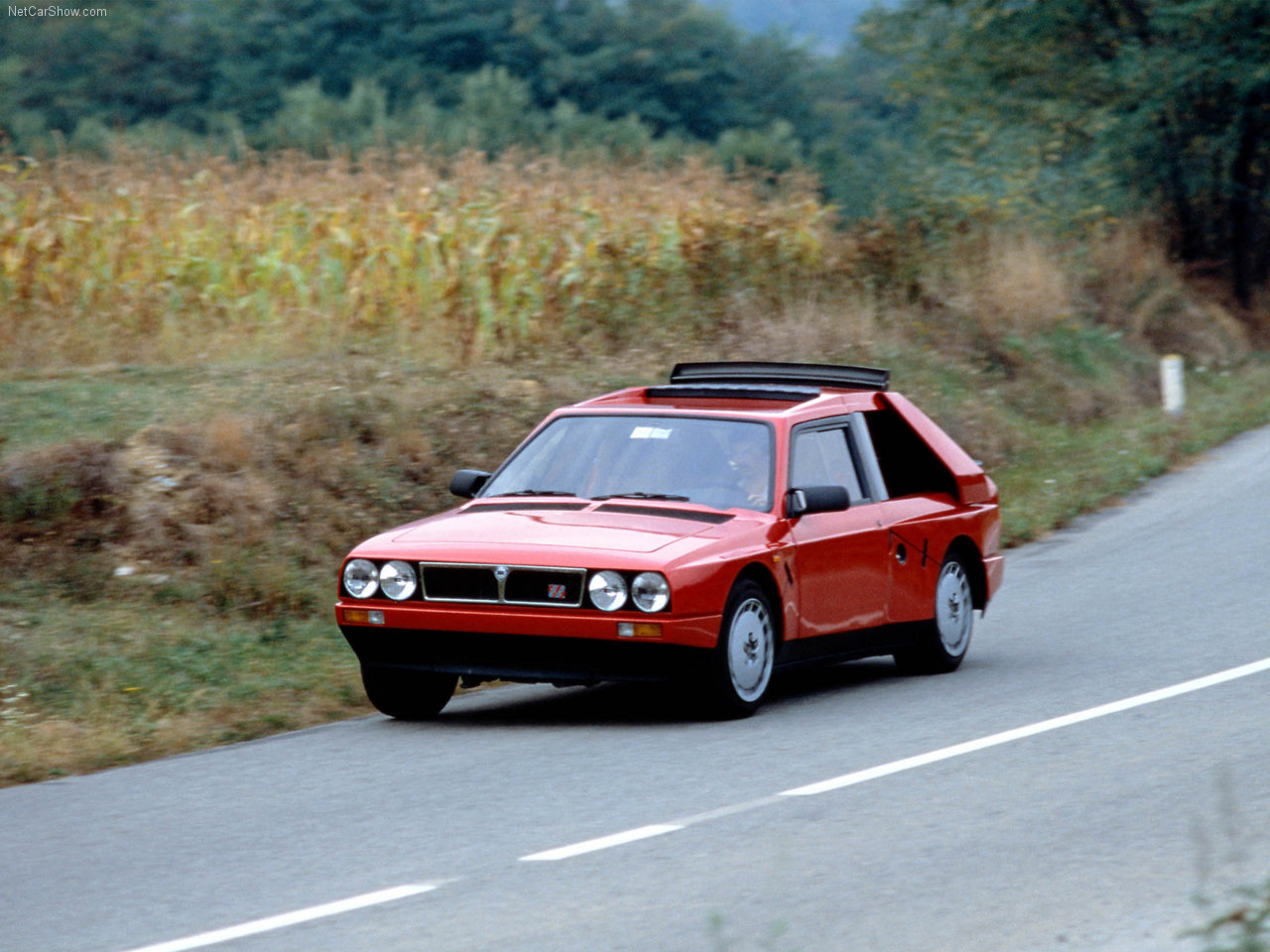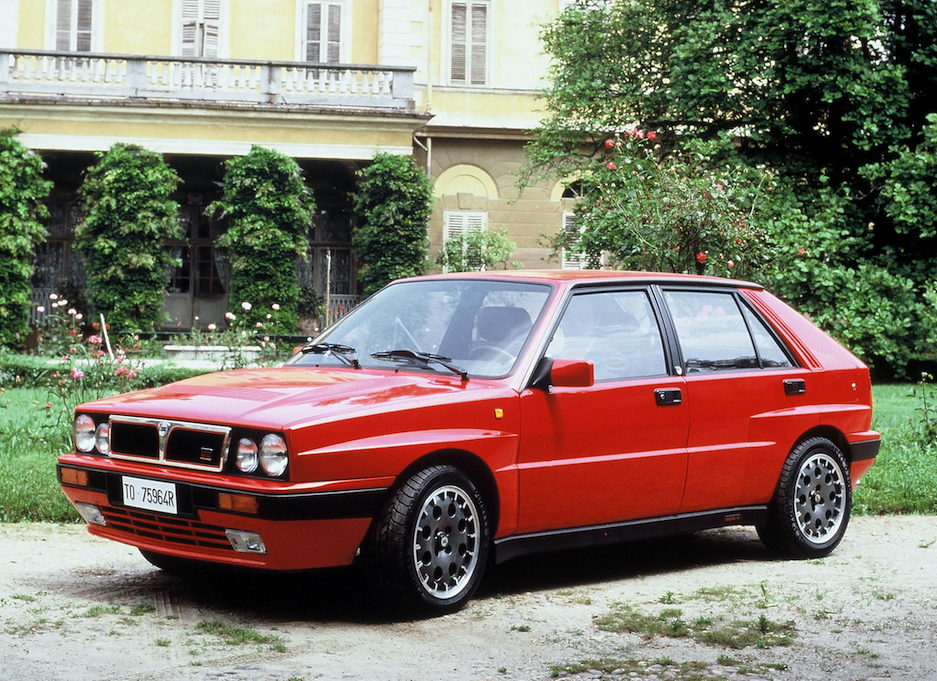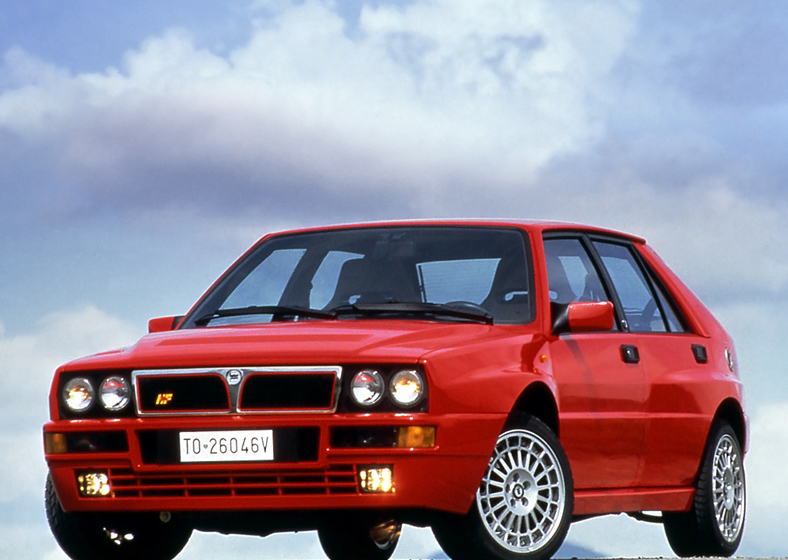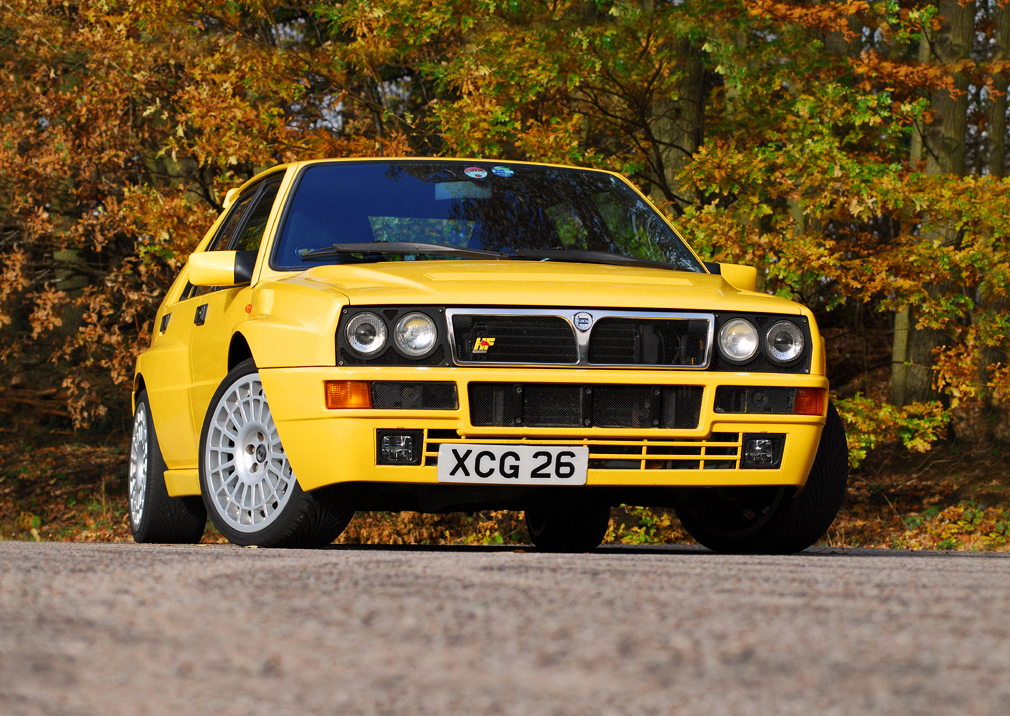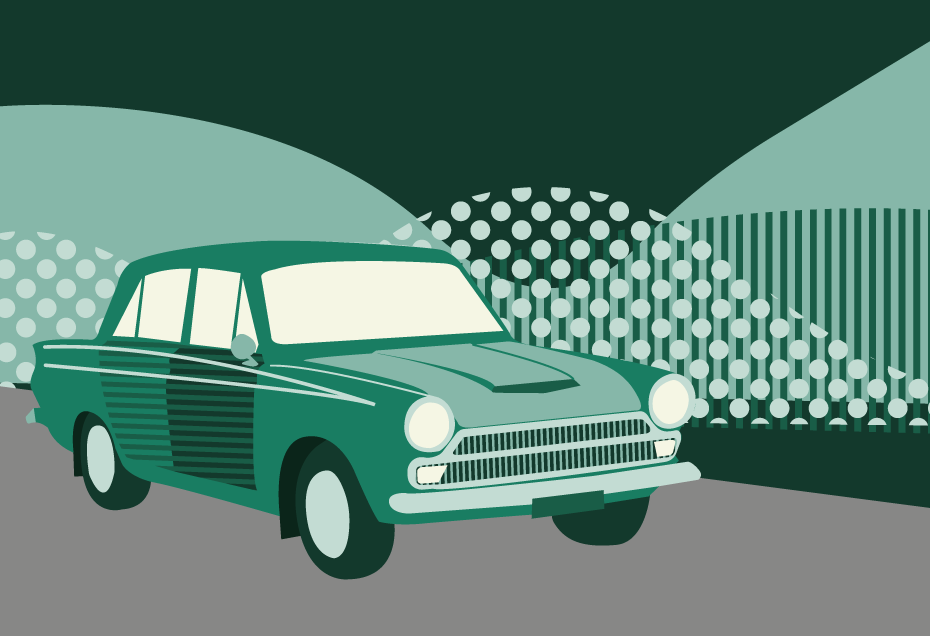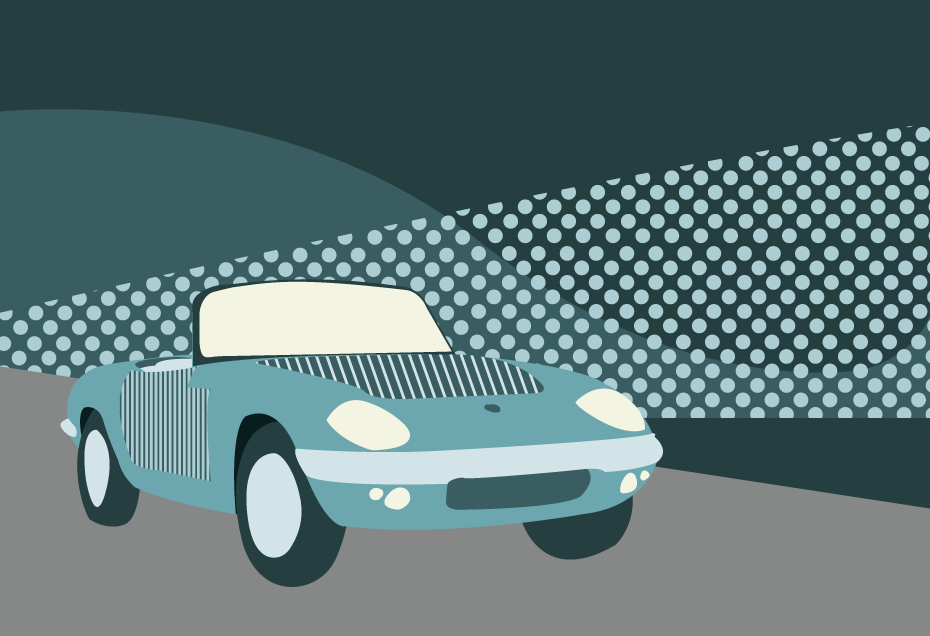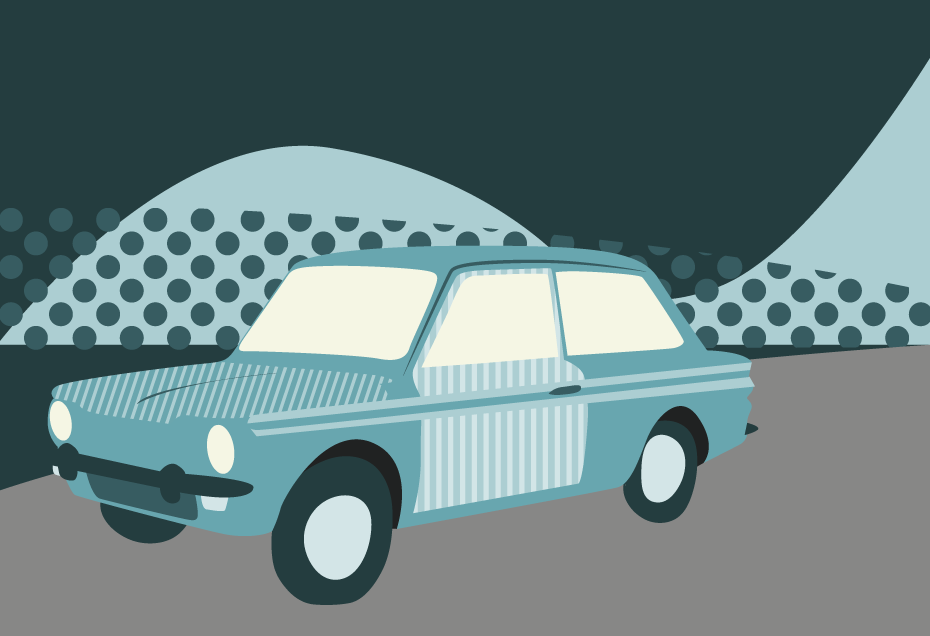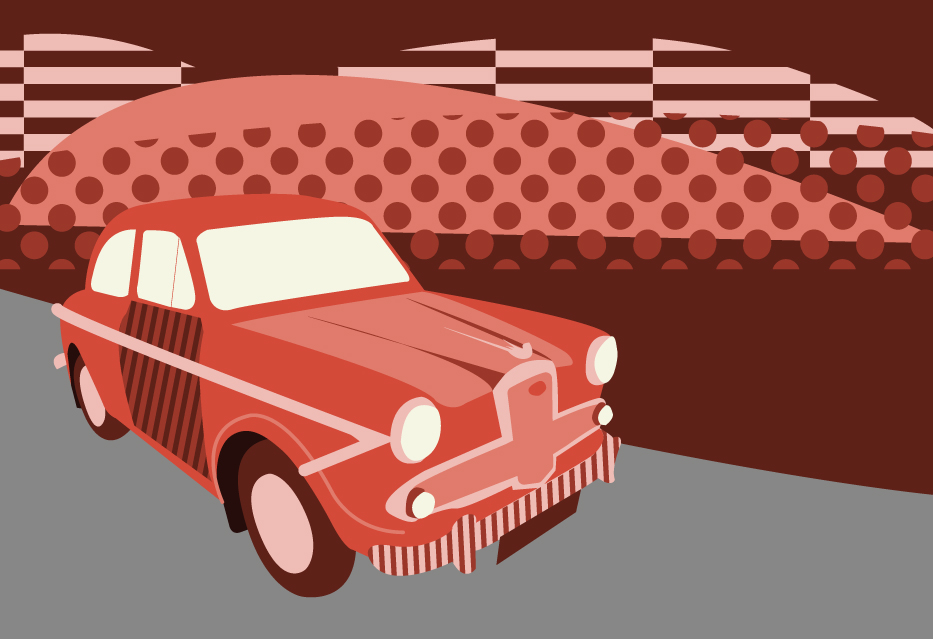For petrolheads of a certain age, just whispering the words Lancia Delta Integrale is enough to moisten the palms and quicken the pulse a few beats.
Few cars genuinely deserve the sobriquet ‘icon’, but the Integrale is one – a no-holds-barred, road-going product of the Italians’ all-conquering, six-time world rally champion.
We trace the story of how an upmarket Turin shopping car evolved into the greatest sports hatch of its time, capable of blowing away everything from the equally legendary Audi Quattro to a Porsche 911.
When the Lancia Delta emerged as a belated replacement for the stylish Fulvia 40 years ago this September, it had a lot to live up to, and a lot to prove.
Not only was it named European Car of the Year for 1980, but Lancia was still recovering from the Beta rust debacle and trying to cling on to its identity after becoming subsumed by Fiat a decade earlier.
Although based on Fiat Strada underpinnings, Giorgetto Giugiaro’s ItalDesign studio gave it a sharp set of clothes, and Lancia’s engineers tuned the Fiat’s 1300 and 1500cc engines to produce an extra 10 horses apiece.
Other notable differences included MacPherson all-independent suspension, and an upmarket level of refinement in keeping with Lancia’s premium image.
It proved to be the right car at the right time for the Italians, with a global recession rapidly compressing Europe’s car market towards the 1.5-litre class, and larger, costlier models languishing unsold in car showrooms.
Lancia looked to the Delta to lure car buyers forced to downsize, yet reluctant to sacrifice their standard of motoring.
Motor magazine asked of the new car in 1980: “Is the new Delta a worthy successor to the Appia and Fulvia of the ‘fifties and ‘sixties, or merely a Fiat Strada repackaged for a classier clientele?”
In some ways, it was both, but Lancia’s tweaks and upgrades had imbued the front-wheel-drive Delta with a character all of its own, both in its razor-sharp looks and on-road behaviour.
At £4,995 it was undeniably expensive, but featured “big car standards of refinement and civility in a compact, economical package”, according to Motor.
Future world-beater
Although no-one could have guessed at the car’s glorious future at the time, the bog-standard Delta was already showing some of the qualities that would one day make it a world-beater.
It boasted a “taut yet resilient suspension system which endows the Delta with superbly surefooted cornering in all surfaces, wet or dry.”
With a top speed of 98.9mph, the Delta was quicker than anything in its class, including the comparable Golf, Opel Kadett and Talbot Horizon – its predecessor as Car of the Year.
“The Delta is a good car,” concluded Motor. “It does nothing badly and most things very well. Sceptics who might be tempted to label the Delta an up-market Fiat Strada should think again for, while certain aspects of its performance do betray humble origins, its character belongs more to the traditional Lancia stable with fine handling, a good ride, impressive refinement, plush trim and excellent finish.”
Autocar praised the 1498cc, 85hp engine’s “delightful smoothness coupled with eagerness”, hailing a “remarkably pleasing car in so many important respects, which endear it to any discriminating driver”.
The Delta trounced the Horizon SX and Volvo 345 in a CAR magazine group test, which described the car as “a lot of fun, easily the best driving machine of the trio”.
“Driver appeal stems essentially from its dynamic qualities – its strong performance, positive handling, firm roadholding, and good brakes – but the Delta also has a delightful gear change, short in travel and crisp in action so that it encourages frequent use.”
The first sporting models
In 1982, the Delta received a subtle facelift, with new bumpers, a rear roof spoiler, and new seats, while weight was dropped by 40kg across the range.
But the most significant change was the introduction of the Delta GT 1600, the first sporting model, powered by a 105bhp, 1585cc unit, and featuring lower profile tyres, retuned suspension and disc brakes all round.
It was the first sign that Lancia were about to enter the hot – or at least warm – hatch arena with the Delta, with the new car reaching 60mph in 10.5 seconds and top speed improved to 112mph.
While that latter figure matches a Golf GTi, it couldn’t live with the more powerful, 1.8-litre VW in a sprint. But all that was to change with the introduction of the Delta HF Turbo.
This is the car that led directly to the Integrale, via the later introduction of four-wheel-drive, several power upgrades and various rally-inspired improvements.
The HF acronym, for “Hi-Fidelity”, had last been seen on the brutal Stratos rally car and originates from the HF Squadra Corse team, a privateer racing team run by Lancia enthusiasts.
When the company decided to re-enter motorsport in 1965 with the Fulvia, it absorbed the team – and the HF tag went on to make rally history.
In giving the Delta the HF suffix, Lancia showed it was serious about turning its relatively humble hatchback into a genuine performance car.
To say it succeeded would be an understatement.
At launch, the first generation HF Turbo was billed as “the fastest 1600cc five-door hatchback on the road”, quicker to 60mph than any other car in its class, the competition including the Golf GTi, Cherry Turbo and Strada Abarth 130TC.
Its engine was based on that of the 1600GT, with a Garrett T3 turbocharger and Weber twin-choke carb pushing power to 130bhp and torque to 141lb ft at 3,700rpm.
On the outside, matt black turbo-embossed side skirts and turbo striping distinguished the car, while the Executive pack bought you Recaro seats, a sliding sunroof, central locking and a headlamp wash wipe.
Testing the HF in 1984, Motor magazine describes a car that’s “all muscle” that leaves “hard-charging rivals like the Golf and Abarth struggling in its wake”.
“Its 0-60 speed of 7.9 seconds is little short of sensational, deposing the Cherry Turbo (8.0 seconds) as sprint king and confirming Lancia’s boast that the Delta HF is just about the quickest production 1600 hatch money can buy.
“The Delta’s 50-70 and 60-80mph increment times of 5.5 and 5.8 sec elevate it almost to the supercar class.”
Like many early 80s turbos, however, the Delta’s needed a lot of right foot to get it whirring, resulting in a “Jekyll and Hyde complex with mild manners and zero brio at low revs and a high energy spurt for the horizon when you put your foot down”.
“All-or-nothing turbo engines are becoming an increasing rarity, but the Lancia has one. It’s got its shortcomings, but it’s also got it where it counts. If you want the quickest of the quick in this class, Lancia have the car.”
Like our illustration of the Lancia Delta Integrale at the beginning of the article?
Download a free high-quality poster version here.
Rallying: genesis of the Integrale
To find out how the HF Turbo became the Integrale, it’s necessary to take a detour into rallying, from the outrageous – and outrageously dangerous – days of the Group B hyper-rally cars to the saner Group A era where the Integrale ruled supreme.
With few models required for homologation purposes under Group B rules, manufacturers were relatively free to produce monstrously powerful cars – up to 600bhp – which shared almost nothing in common with road-going production cars.
In 1982, when the Delta was just easing into the sporting hatch market with the 1600GT, Lancia produced the 037 for rallying, a silhouette racer (very) loosely based on the Montecarlo.
Despite a constructors’ title in 1983, by the following year the 037 was lagging behind the four wheel drive Audi, and the similarly-propelled Peugeot 205 T16 in 1985.
Indeed, the 037 was pensioned off before the final race of that 1985 season in favour of the uniquely supercharged and turbocharged Lancia Delta S4, which made a huge impression by winning on its debut in the RAC Rally in the hands of Henri Toivonen.
Like the 037 before it, the Delta S4 shared little with the road-going Delta other than its overall shape, but 200 road cars were produced, generally known as the Stradale and costing five times as much as the HF Turbo.
The road car, like the rally car, was fitted with both a turbocharger and a supercharger and two intercoolers, its 1.8-litre engine producing 247bhp and powering all four wheels, with 70 per cent going to the rear.
Lancia claimed a top speed of 140mph and a 0-60 time of six seconds flat.
On the circuit, S4 driver Markku Alén was only denied the world title because of a technical scrutineering infringement after winning the Rallye Sanremo – two weeks after he already been crowned champion.
But it was the death of Toivonen and co-driver Sergio Cresto in an S4 on the Tour De Corse, the latest in a string of rally fatalities, that would directly lead to the scrapping of Group B at the end of the 1986 season.
From 1987, Group A would be the flagship rally championship, and the sudden change in rules left many manufacturers without a suitable car.
Not so Lancia, who had the Delta HF Turbo, newly offered in four wheel drive format on the road, to fill the void.
It proved a far more suitable car than its chief rally rivals, the underpowered Mazda 323 and Sierra XR4x4, the rear wheel drive Ford Sierra RS Cosworth and BMW M3, and the front-drive Opel Kadett GSi and Renault 11 Turbo.
The Lancias dominated the 1987 world championship, with Massimo Biasion winning the opening Monte Carlo Rally, as well as the later Argentina and Sanremo events.
But it was Juha Kankkunen who took the title in another Delta, with four podiums complemented by wins on the Olympus Rally and the RAC Rally enough to clinch the crown.
The HF Turbo 4WD on the road
After the success of the HF Turbo, other, more muscular rivals grabbed the public’s imagination, so Lancia had to do something to push the Delta back to the top of the hot hatch charts.
This they did in spades, relaunching the car in smarter clothes, four wheel drive, fuel injection and more firepower, boosting output by 10 horses to 140bhp.
The 1.6-litre engine was rotated through 180 degrees and tilted forward by 18 degrees, resulting in improved centre of gravity and repositioning the exhaust manifold at the front for better cooling.
A more responsive Garrett T2 turbo helped bring maximum torque of 141lb ft down to 3,500rpm instead of the previous 3,700rpm, top speed was up to 122.4mph and 0-60 down to 7.6 seconds.
That made it once again the fastest-accelerating 1600cc car, besting the Ford Escort RS Turbo among others.
Reviewing the new car in November 1986, Motor magazine said that turbo lag had been markedly improved.
“Boost builds up quickly and progressively to deliver a mid-range wallop that is every bit as impressive subjectively as it looks on paper,” it added.
“The steering is surprisingly light and beautifully fluid, allowing the Delta to be guided swiftly through a series of S-bends with little effort.
“There isn’t another car (in its class) that assembles the essential elements of driving enjoyment and day-to-day practicality with anything like the flair of the Lancia.”
The Integrale goes rallying
Despite winning the opening two rounds of the 1988 world championships, the HF Turbo was not without its flaws – restrictive wheel arches, too-small wheels and brakes, and limited suspension travel.
Hence the appearance of the Integrale 8v for the third round in Portugal, which addressed all these shortcomings and added extra power into the bargain.
By the end of the season, Lancia had won 10 of the 11 rounds that counted for the manufacturers’ series, with Biasion taking the drivers’ title.
Integrale hits the road
The road-going version of the Integrale 8v, produced to satisfy Group A homologation rules, proved that Lancia hadn’t lost its touch.
It went on to become the ultimate cult hot hatchback, initially packing 185bhp from its turbocharged 2-litre, twin-cam engine, with a claimed top speed of 134mph.
In February 1988, Autocar pitted the Integrale against another road-going rally legend, the Audi Quattro, in a 1,000-mile test in a variety of conditions, including a 10-mile stretch up a snow-covered Alpine pass closed for winter.
Both the Lancia and Audi can hit 60mph in six seconds, and both burst from 50mph to 70mph in 3.7 seconds. Both are ill-suited to a peaceful drive listening to classical music, and they share a sporting DNA honed on the world’s most unforgiving rally terrain.
But which is best?
Autocar, perhaps not surprisingly, points to the Audi having better build quality, but thereafter it’s the Lancia by a nose.
“After well over 1,000 miles of hard driving in snow, rain, on motorways, a test track and icy mountain passes, choosing between the Delta HF Integrale and the Quattro wasn’t easy,” said the magazine.
“Without a shadow of doubt, for all year-round driving, these are the best two drivers cars you can buy.
“Take money out of the equation. Forget that you can by two Integrales for the price of the Quattro. It’s a close thing, very close – but for sheer driving pleasure we’ll take the Lancia.”
Adrian Flux Classic Car Insurance
Integrale 16v – keeping ahead of the game
Back on the rally scene, and while the 8v Integrale started 1989 on a roll, winning its 12th successive world rally event in a row, serious challengers had begun to emerge.
The Toyota Celica GT4 and the Mitsubishi Galant shrugged off their early season technical difficulties to take the 1,000 Lakes Rally and Rally Australia respectively.
But by then, Lancia was already working on the next generation, the Integrale 16v, which won on its debut in the Rallye Sanremo in the hands of Biasion to help clinch another manufacturers’ title.
The Lancia went on to claim the following year’s title too, winning six races shared between three drivers, but Sainz took the drivers’ crown after Kankkunen crashed while leading the RAC Rally.
When CAR tested the road-going version of the car, they found a Lancia that could easily keep up with a Porsche 944 S2 on acceleration, if not top speed.
The new car was closer to the ground, and more aggressive with a power bulge and striking intake louvres.
The build quality may have remained “typically Italian”, and you know what that means, but the 2-litre, 16v engine, boosted by a Garrett T3 turbo, now produced 200bhp and 220lb ft of torque at just 3,000rpm.
That’s still about 100bhp less than the competition car, but more than enough to make it a raging wolf in sheep’s clothing on the road.
CAR put the Integrale up against the boxy Rallye Golf G60, another street-legal rally car built for homologation purposes.
While neither is a sports car, the magazine said either “would make most sports cars pale on winding roads and uneven surfaces”.
The Delta, once again only available in left hand drive, was capable of hitting 60mph in just 5.7 seconds on its way to 138mph, although it needed a healthy dose of revs to give of its best.
“Below 3,500rpm it displays an attitude one could almost call aversion to work,” said the reviewer. “But as soon as the turbo has built up the required boost pressure, the raucous 2-litre unit sheds its mask and takes off.
“When it ignites, the 200bhp rocket will eagerly rev to the 7,000rpm cut out that was installed to save it from self destruction, but to keep it happy you must keep the blower on the move.”
Though noisier and bouncier than the Golf, a competition car in family car trim, the Delta has “the better engine, an excellent chassis, and the more practical, prettier body”.
The price, however, had increased from £16,995 for the 8v to £19,625 for the new model and, according to CAR, was “no longer value for money”.
Debatable given it was still considerably cheaper than the Audi Quattro.
Rowan Atkinson on the Integrale 16v
Before he famously bought a McLaren F1, comedian Rowan Atkinson cut his teeth on the 8v Integrale before upgrading to the 16v.
Writing for CAR magazine in 1989, he waxed lyrical of the Lancia as a “great driver’s car, and terribly quick”.
“As a rapid coverer of ground, the 16-valve Integrale can have few peers,” he added.
“If you believe as I do, that the essential requirements of rapid transport on normal, unpredictable, congested roads are an abundance of power, a total predictability of handling, and an absence of bulk, I can’t imagine any car at any price getting you from P to Q faster than this one.”
In town, the turbo lag – while further improved from the 8v – remained “intensely frustrating”.
“Most turbos find it difficult to shine on standing starts, but the Integrale is additionally hampered by a very high bottom gear,” said the then Blackadder star.
“When attempting to get away quickly from the lights, it seems to take an age to stoke the thing into action. Then suddenly it all happens at once and you’re frantically clawing at the ground with all four paws like a frightened leopard.”
Atkinson praised the car’s surprising sophistication.
“When I ordered my original eight-valve, I was expecting the car to be crude, but effective: just what you might expect of a 5000-off homologation special – a sort of four-wheel-drive Renault 5 GT Turbo,” he wrote.
“What you actually get, in both normal and multi-valve versions, is a machine of considerable solidity and quietness, which, mechanically, feels as though it has been carved from a single ingot.”
Delta reigns supreme and arrival of the “Evoluzione”
In the 1991 rally season, it was clear early on that the Integrale would face a stern test from the Toyota Celica, which won the opening round at Monte Carlo with Carlos Sainz at the wheel.
Normal service was quickly resumed, however, with Kankkunen topping the podium at Kenya, Argentina, Finland and Australia, and Didier Auriol winning at Sanremo.
It gave Lancia a record fifth manufacturers’ title, though Kankkunen was pushed all the way to the drivers’ crown by Sainz, only securing the title in the closing RAC Rally when the Spaniard’s Celica blew a head gasket.
But nothing stands still in motorsport, and towards the end of the season Lancia was busy readying the third generation Integrale for the following season – the “Evoluzione”.
Sometimes nicknamed the “Deltona” or “Super Delta”, the Evo made a winning debut for Auriol at Monte Carlo, and took a further seven wins to secure a record sixth successive title for Lancia.
By now, Lancia had officially withdrawn from rallying, the cars competing with factory support under the banner of the semi-private Jolly Club team.
The Evo had a stiffer body, wider wheel arches, bigger wheels and brakes, improved suspension and more power than its predecessor.
But how would it fare on the road when CAR lined it up alongside two out-and-out sports cars in the Lotus Elan and Porsche Carrera 4, the three billed as “the most rapid, point-to-point machines you can buy”?
Now boasting 210bhp, clever tuning had finally entirely rid the Integrale of its low-rev sloth, while it was comfortably the quickest in the all-important mid-range increments, from 40-60mph, 50-70mph and 60-80mph before the Porsche’s 3.6-litre grunt took over at high speeds.
To look at, these were three very different machines, the squat, soft-top Elan, the classic 911 and the fiercely aggressive hatchback, still only available as a left hooker.
“The Integrale flaunts that ‘come on and drive me’ look like never before, its distended wheel arches and bulbous, extensively-vented bonnet lending it something of the Schwarzenegger look,” said the magazine.
“Any one of these cars will have you quivering with desire. All these cars feel special – when you look at them, when you sit in them, when you drive them.”
But it’s the Lancia, with its rally pedigree, that “feels the most composed of the trio, more stable at speed”.
“It’s possible to drive the Lancia with near-abandon, confident that it will grip, absorb and behave unalarmingly,” said the magazine. “It makes you feel easier about dispensing the considerable muscle of its engine.”
And then there’s the price tags, the Elan the cheapest at £22,940, followed by the Integrale at £23,145 and the Porsche a whopping £57,561.
“You could buy both Elan and Integrale for the Porsche’s tag, and the fact is that the Integrale is the better car, point to point,” said CAR.
“The Integrale, virtually as fast as the 911 where it counts, has that extra measure of ability, and decisively more security, to make it the more confidence-inspiring ride.
“That’ll be still more true come the rains. On top of that it’s a great entertainer. The Lancia’s purposeful and outlandish looks add to its appeal, too, and never mind the disadvantage, less severe than it might seem, of sitting in the wrong half of it.”
Atkinson, back to pass comment on the latest evolution of his favourite car, said that while the chunky body kit detracts from the “neat, razor-edged 1978 design”, he still adored the Delta.
“Its look, its image, its feel, its performance are right up my Strada,” he added.
“The handling and steering are a total delight, and a big improvement. It feels so much smaller and lighter than the old car, so much more nimble.
“If you have never owned an Integrale, try and save up for this one. As more and more cars in the Fiat group are forced to share parts, and product identity has become diluted, this could be the Last Lancia.”
Like our illustration of the Lancia Delta Integrale at the beginning of the article?
Download a free high-quality poster version here.
The end of an era
The 1993 season was to be the Integrale’s, and Lancia’s, last hurrah on the world rally circuit, and the end of a record-breaking era that saw the car win 46 races at world level.
It was also the end of Martini’s long sponsorship, of factory support from Lancia, and of Auriol and Kankkunen in the drivers’ seats, both moving to Toyota.
Without Lancia’s backing, only minor technical developments were possible, and by mid-season it was clear that the Delta’s long world domination was over.
Outclassed by the latest Toyota and the emerging Ford Escort RS Cosworth, the car’s best placing was Sainz’s second in the Acropolis Rally.
With no chance of competing for either manufacturers’ or drivers’ titles, the Jolly Club opted out of the final round of the series, bringing to an end the Delta’s career as a top-class rally car.
But not the end of the Integrale
On the road, the Integrale wasn’t quite ready to give up the ghost, even if Lancia had completely withdrawn from the UK market.
June 1993 saw the arrival of the Evo II, with an updated version of the 2-litre engine now producing 215bhp.
Cosmetic changes included new 16-inch alloys, body colour roof moulding, aluminium fuel cap and air-intake grilles on the front mudguards, and a red-painted cylinder head.
CAR pitched the Evo II against two more cars with rally pedigree, the Subaru Impreza Turbo 2000 and the Escort RS Cosworth Lux, asking if the “living legend” was “a spent force, like its maker…or still the benchmark driving machine?”
What follows is a fitting eulogy to greatness, to a genuine motoring icon making its last, flamboyant hurrah before bowing out at the top of its game.
“Very few pedigree sports cars could live with a hard-charging Integrale on twisty roads; it’s as quick point to point as anything on four wheels that passes for family transport. No hot hatch gets close for driver satisfaction. Nothing inspires quite so much confidence.
“The Integrale is one of the great driving machines of our time. It’s up there with the very best, alongside the Audi Quattro and BMW’s definitive M3.”
And, good though they are, the magazine said neither the Subaru or Ford were in the same class.
“Neither of these two gets close to dethroning the Lancia Delta Integrale.
“Its steering is sublime, its handling brilliantly neutral, its grip prodigious, its gear change an indulgence, its seats exquisite.
“The final evolution of an all-time great gives more driving pleasure than any rival, here or elsewhere.”
Special and limited editions
Between 1992 and 1994, Lancia produced a number of limited edition models based on the Evoluzione, some made on behalf of specific markets or owners clubs and others put on general sale.
Those on general sale included the Martini 5 and Martini 6, produced to celebrate the fifth and sixth world championships won, and the dark green “Verde York”.
The dark red Edizione Finale was produced for the Japanese market, while the yellow Giallo Ginestra went to Germany, Italy and France.
Club specials included 15 Club Italia cars, 20 for Club Hi.Fi., and just seven Club Lancia specials.
In addition, a one-off, two-door drop-top Spider Integrale was built for Fiat president Gianna Agnelli, while an Evo III concept – the Viola – was produced but never manufactured in volume.
In truth, with Lancia’s rally division a thing of the past, the Integrale’s raison d’être had been lost.
Lancia Delta Futurista
While the Delta name lived on through a second and, belatedly, third generation, the Integrale name died with the Evo II.
But the legend was given a modern reimagining in 2018, courtesy of Italian coachbuilder Automobili Amos and the Lancia Delta Futurista.
Using an original Integrale chassis, a wider, hand-beaten aluminium body with weight-saving carbon-fibre front end, bonnet and rear panels saw the Futurista shed 90kg from its ancestor.
The original engine was given a custom cooling system, air intake and exhaust, plus a rebuilt differential and reinforced transmission, producing a claimed 330bhp.
Only 20 conversions were planned, each costing an eye-watering £270,000.
If you want one of the originals, a decent early 8v model can be yours for a little over £20,000, rising to £50,000 for an Evo II and silly prices for special editions in top condition.


